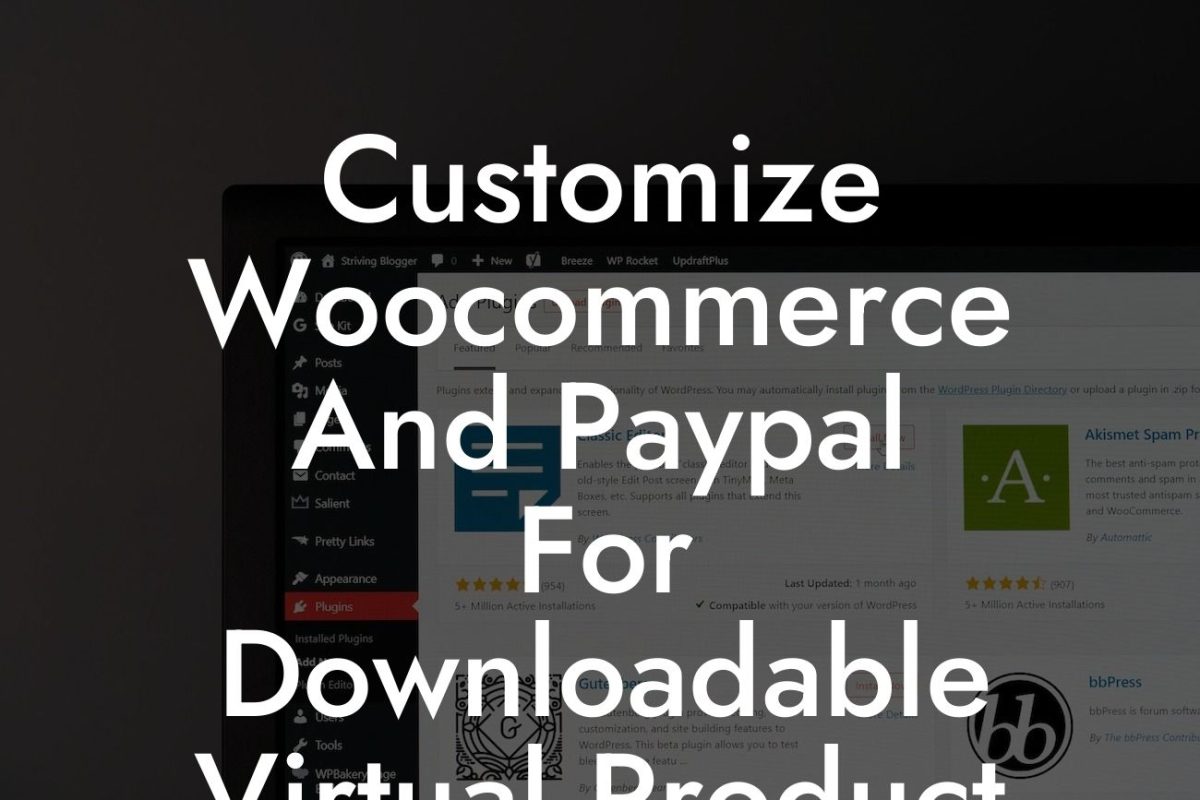Are you tired of the generic and monotonous checkout fields on your Woocommerce store? Do you want to provide a more personalized and seamless experience for your customers? Look no further! DamnWoo is here with a powerful WordPress plugin designed exclusively for small businesses and entrepreneurs to revolutionize their online checkout process. In this article, we'll explore how you can change checkout fields in Woocommerce and create a unique, customized checkout experience for your customers.
Changing the checkout fields in Woocommerce allows you to gather specific information from your customers during the purchase process. It enables you to tailor the checkout form according to your business requirements, providing a streamlined experience and reducing cart abandonment. Here's a step-by-step guide on how to modify checkout fields using DamnWoo's WordPress plugin:
1. Installing DamnWoo Plugin: Begin by installing DamnWoo's plugin on your WordPress website. Navigate to your WordPress dashboard, click on "Plugins," and then select "Add New." Search for DamnWoo, click on "Install Now," and activate the plugin.
2. Accessing Checkout Field Editor: Once the DamnWoo plugin is activated, you'll find a new tab named "DamnWoo" in your WordPress dashboard's sidebar. Click on it to access the plugin's settings. From there, click on "Checkout Field Editor."
3. Modifying Existing Fields: The plugin allows you to modify the default fields in the Woocommerce checkout form. To make changes, select the field you want to edit or remove. You can change the label, make it required or optional, and even customize the placeholder text. Make sure to save your changes after each modification.
Looking For a Custom QuickBook Integration?
4. Adding New Custom Fields: Want to collect additional information from your customers? DamnWoo makes it effortless to add custom fields to the checkout form. Simply click on the "Add Custom Field" button, specify the field type (text, select, checkbox, etc.), set the label and other options, and save your changes.
5. Reordering the Fields: The order of your checkout fields is important for a smooth and logical checkout flow. With DamnWoo, you can easily rearrange the fields by dragging and dropping them into the desired position.
Woocommerce Change Checkout Fields Example:
Let's consider an example of a small artisan coffee shop using Woocommerce. They want to collect the customer's preferred coffee roast level during checkout. By following the steps mentioned above, the coffee shop owner can add a custom "Roast Level" field to the checkout form. Customers can select their desired roast level, ensuring they receive the perfect cup of coffee every time they order.
Congratulations! You've just unlocked the power to customize your Woocommerce checkout fields with the help of DamnWoo's WordPress plugin. Don't settle for a cookie-cutter checkout experience when you can provide your customers with a tailored journey. Explore the wide range of guides and plugins offered by DamnWoo to take your online business to new heights. Share this article with fellow entrepreneurs and start revolutionizing your checkout process today.













